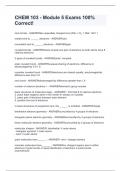Summary
Summary Language in multilingual contexts
- Course
- Institution
This summary provides a clear and concise basis for the course Language in multilingual contexts, which is taught in the first bachelor (semester 1) Language and Literature. The summary covers the main themes of the course, including the social aspects of multilingualism (code switching, translangu...
[Show more]












